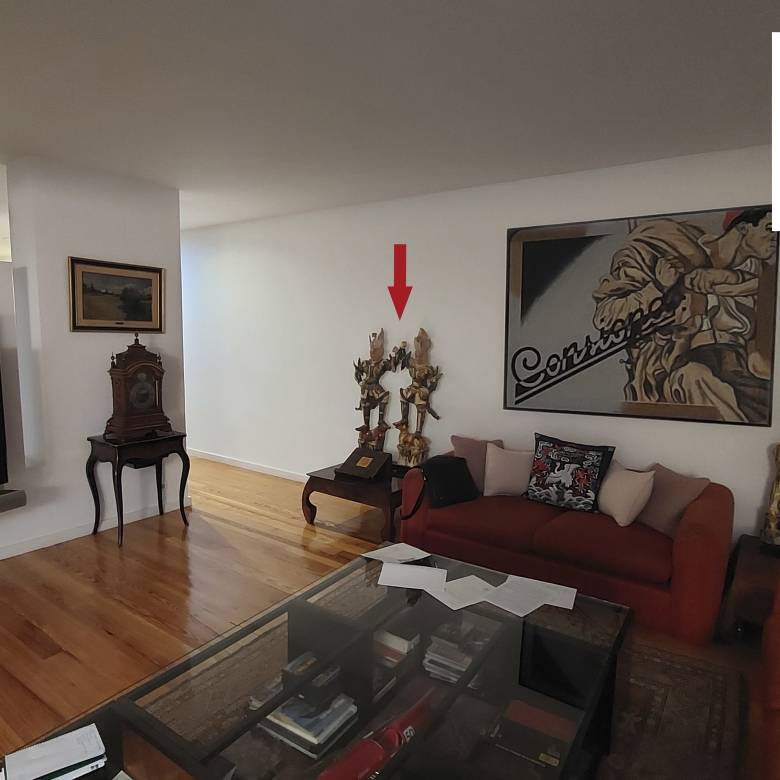ASIAN ART AUCTION 29 DECEMBER 2022
Sancai glazed ceramic 'tripod vessel', Tang dynasty (618-906)
Press 'Program an autobid'in order to confirm
A vessel modelled in kaolin ware and decorated with amber, green and cream-coloured 'sancai' (三彩) glaze.
The vessel's bowl is rounded, tapering before reaching the base, and is supported on three lion's-claw feet. The shoulders are broad and support a low, curved, open neck that leads into the interior through a circular orifice. The body is surrounded by a relief border decorated with rings.
A 'sancai' glaze has been applied to the piece, sliding down from the top, covering the amber-coloured rim, and continuing with a three-coloured pattern. A motif resembling a peacock's feather pattern has been produced at the base of the neck, followed by pale splashes on a banded background. The glaze ends before reaching the base, which reveals a light-coloured paste.
The decoration is similar to other pieces of the period, although the result is never the same, each one being unique. When the glaze is fired, depending on how it is applied, it slips and mixes randomly. The craftsman's skill in the execution is essential for the effect, together with the randomness during firing, to obtain a design with a harmony of colours and shapes. In this case, the result is beautiful and attractive.
A similar example, although without relief decoration, was sold on 17 March 2017 at Sotheby's New York, lot number 62, with an auction price of USD 18,750, on 11 May 2021 at Bonhams (London), lot number 62, with an auction price of USD 11,551.
Height: 13.50 cm; Mouth diameter: 12.70 cm; Overall width: approx. 20 cm.
Condition report:
Its state of preservation is exceptional, considering its age.
Provenance:
Spanish private collection.
This important private collection comes from a successful businessman dedicated to national and international construction and investment who resided in different parts of Spain and the South of France. This part of the collection, exhibited exclusively for the first time at auction, focuses on Chinese ceramics from the Tang dynasty and is a collection of museum quality pieces. The family's tradition of travel dates back to the success of an ancestor who in the 1930s travelled to Manila, Shanghai, Cairo, Havana, etc., practising the sport of "cesta punta", and in particular, motivated by an interest in discovering different cultures, which led them to build up a large collection. In general, their interest in art is such that their collection includes pieces of both Asian and European origin.
The acquisition of the collection began in the 1990s and was built up during years of study in Madrid and on various trips to Paris, New York, Hong Kong, Spain and Germany; at reputable antique dealers such as "Arch Angel" in Hong Kong and international auctions such as Nagel. To this end, specialists have also collaborated in the selection, study and verification of the pieces, as can be seen in the accompanying documentation: invoices, studies and reports.
Further information:
These ceramic forms, dedicated to being in funerary trousseaux, were produced during the Tang dynasty. This period is considered to be a golden age for art, culture and the discovery of artistic techniques in China. It is at this time that porcelains decorated with a three-colour "sancai" glaze were developed. It is for this reason that these ceramics are valued and appreciated today over the centuries.
Moulded pottery vessels or utensils with added colour during the Tang Dynasty are notable for their high quality and unique production process. The production process was complex for 7th- and 8th-century potters: the moulds are fired in kilns at around 1100 °C, then the glaze is applied, and finally the temperature is lowered to 900 °C for firing the decoration.


























